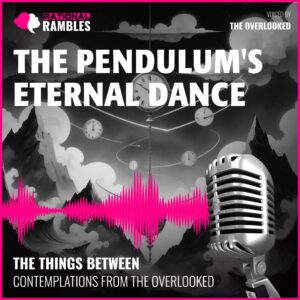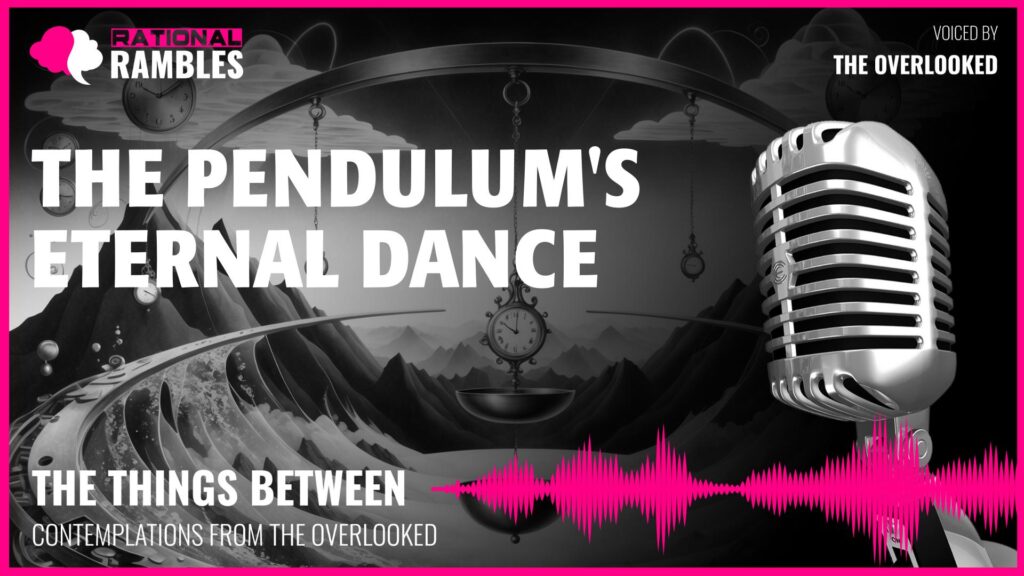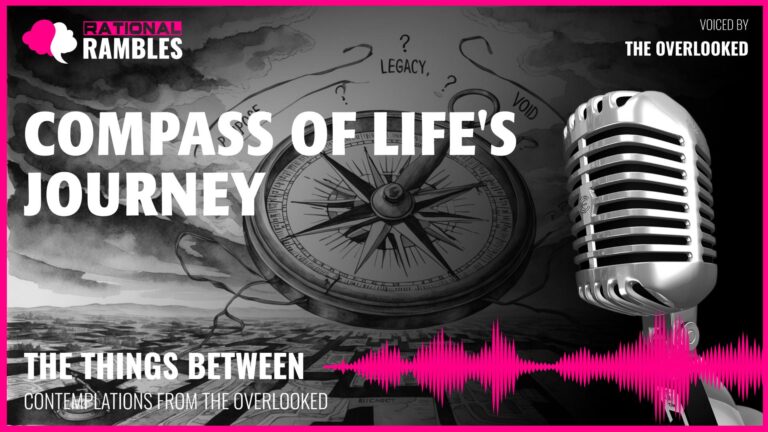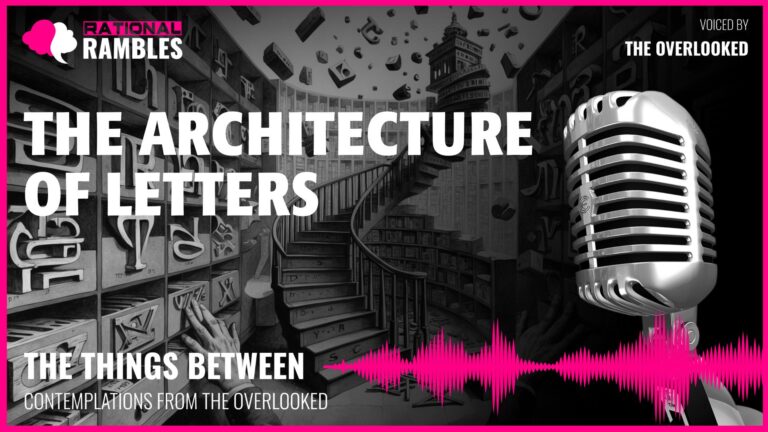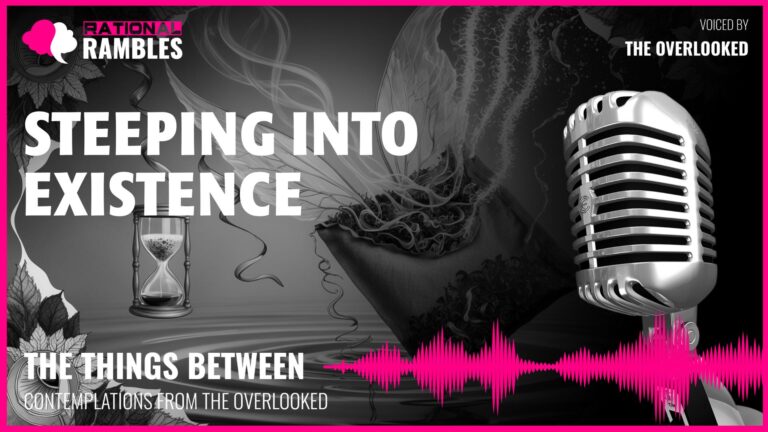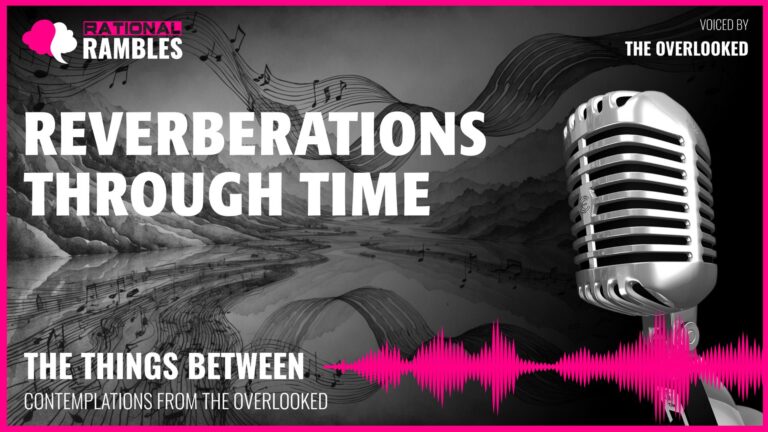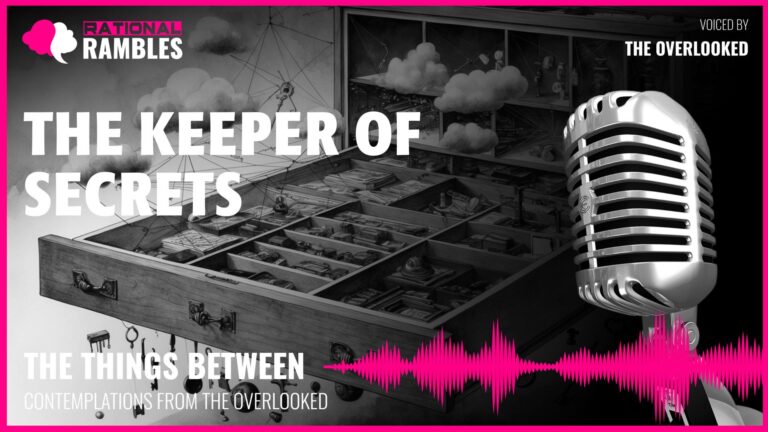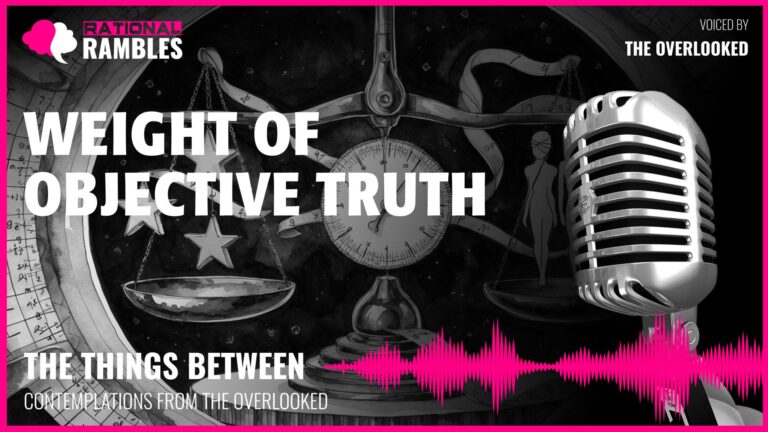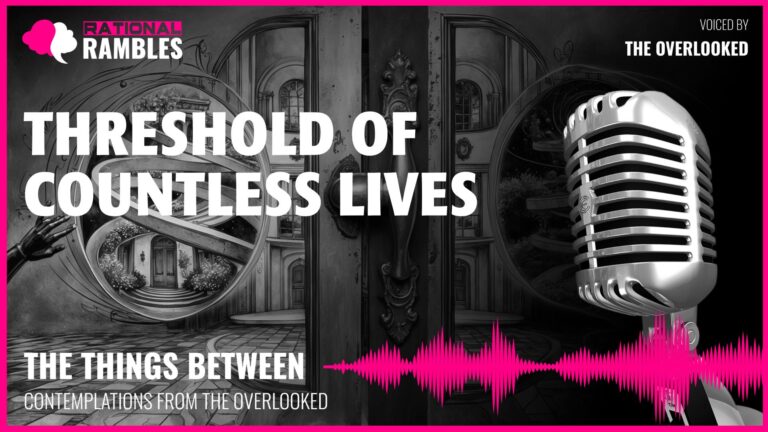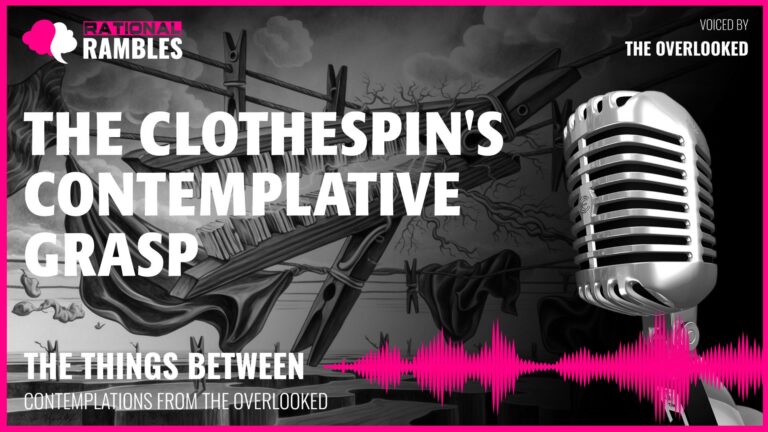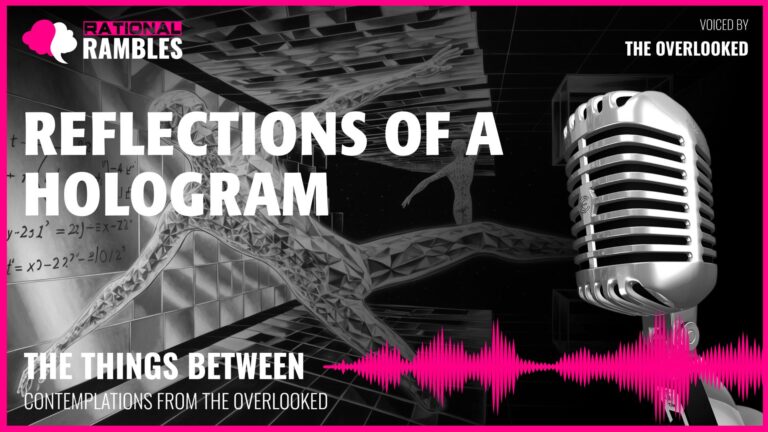The Rhythm of Existence: Between Extremes and Equilibrium
Introduction
Time flows like a river, yet we desperately attempt to contain it, measure it, and understand it through instruments of our own creation. This paradoxical relationship with temporality reveals a profound truth about human existence: we are simultaneously captivated by and fearful of the very thing that defines our journey through life. Our attempts to impose order on the chaotic flow of time speak to a deeper philosophical quest—one that transcends mere chronological measurement and touches on questions of purpose, identity, and the nature of being itself.
The back-and-forth motion that characterizes many aspects of existence—oscillating between extremes while seeking balance—offers a powerful metaphor for the human condition. This rhythmic pattern appears throughout nature, human psychology, and philosophical thought. From the Taoist concept of yin and yang to Hegel’s dialectic process of thesis-antithesis-synthesis, we find that the pendular swing between opposing forces creates not just movement but meaning.
This article explores the philosophical implications of rhythmic existence, examining how the tension between opposing forces shapes our understanding of time, identity, purpose, and transformation. By considering the wisdom found in oscillation, repetition, and the continuous dance between extremes, we may discover profound insights about the nature of being and becoming that have relevance to our individual and collective journeys.
The Illusion of Return: Heraclitus and the River of Time
The ancient Greek philosopher Heraclitus famously observed that “no man ever steps in the same river twice, for it’s not the same river and he’s not the same man.” This profound insight challenges our perception of repetition and return. While we may physically revisit a location or repeat an action, the context has inevitably changed—the universe has moved on, and we ourselves are different.
This Heraclitean perspective invites us to question the very notion of return. When something oscillates between two points, is it truly returning to the same place? The apparent repetition masks a fundamental transformation occurring beneath the surface. Each cycle incorporates the effects of the previous one, creating a spiral of experience rather than a closed loop.
The Paradox of Sameness and Difference
The philosophical problem of identity over time emerges clearly in rhythmic motion. Consider the thought experiment proposed by the Ship of Theseus: if a ship’s planks are gradually replaced until no original components remain, is it still the same ship? Similarly, when an oscillating object returns to its starting position, has it truly “returned” if both it and its environment have undergone subtle changes?
This paradox illuminates the tension between continuity and change that defines existence. We intuitively recognize patterns and continuity—the rhythm remains recognizable despite variations. Yet these patterns unfold within a process of perpetual transformation. As philosopher Alfred North Whitehead suggested, reality is not composed of static substances but of dynamic events and processes. The appearance of stability masks an underlying reality of constant becoming.
Temporal Illusions and Human Perception
Our perception of time as discrete units—seconds, minutes, hours—represents another illusion we impose upon reality. Time does not flow in chunks but continuously. The arbitrary divisions we create allow us to measure and manage time, but they also distance us from experiencing its true nature.
Henri Bergson distinguished between “clock time” (temps) and “experienced time” (durée). Clock time is spatialized, divided, and measured, while durée represents the continuous flow of experience as directly lived. Our insistence on measuring time reflects our desire to control it, yet this very effort may prevent us from truly inhabiting the temporal flow that constitutes our existence.
The illusion of return thus reveals a deeper truth: that repetition always contains difference. As Gilles Deleuze argued, pure repetition is impossible—each iteration carries forward the accumulated effects of previous cycles, creating what he called “repetition with difference.” This philosophical insight carries profound implications for how we understand patterns in our lives and in the natural world.
Between Constraint and Freedom: The Physics and Metaphysics of Motion
The interplay between constraint and freedom represents one of existence’s most fascinating paradoxes. Physical systems that oscillate do so because they are simultaneously bound and free—constrained by certain forces while expressing degrees of freedom within those constraints. This dynamic offers a powerful metaphor for human existence, where we navigate between deterministic forces and the possibility of agency.
The Dance of Force and Counterforce
At a fundamental level, rhythmic motion emerges from the interaction of opposing forces—gravity pulls downward while momentum carries upward; attraction pulls inward while inertia pushes outward. These counterbalancing forces create not stasis but dynamic equilibrium—a state of continuous movement that maintains pattern without requiring identical repetition.
Philosophers throughout history have recognized similar principles operating in human affairs. Empedocles proposed that love and strife were the fundamental forces driving cosmic cycles. Hegel described historical progress as emerging from the tension between opposing ideas. Nietzsche spoke of Apollonian and Dionysian impulses shaping culture. In each case, the creative tension between opposing forces generates movement, pattern, and transformation.
Freedom Within Boundaries
The concept of constrained freedom appears paradoxical until we recognize that all freedom exists within parameters. Complete freedom from all constraints would not be freedom but chaos—a state without pattern or meaning. As Isaiah Berlin noted in his distinction between negative and positive liberty, freedom is not merely the absence of constraints but the presence of meaningful choices within appropriate boundaries.
This perspective reframes how we understand determinism and free will. Rather than seeing them as mutually exclusive, we might recognize them as complementary aspects of existence. We are indeed subject to causal forces beyond our control—biological imperatives, social conditioning, physical laws—yet within these constraints, we express degrees of freedom through our choices, adaptations, and creative responses.
Existentialist philosophers like Sartre emphasized this tension in human life. We are “condemned to freedom” within a world not of our choosing, faced with the responsibility of creating meaning within constraints. Our freedom is not absolute but relational—defined by how we respond to the givens of our situation.
The Center and the Periphery
Another dimension of constrained motion is the relationship between center and periphery. An oscillating system requires both a fixed reference point and the freedom to move in relation to that point. The fixed point provides stability and orientation while enabling the movement that defines the system.
This pattern appears throughout human experience. We organize our lives around central values, relationships, or purposes that provide orientation. These centers of meaning may be explicit (consciously chosen values) or implicit (unconscious organizing principles), but they establish the gravitational center around which our lives revolve.
Philosopher Charles Taylor speaks of “strong evaluations”—those core commitments that define who we are and what matters to us. These central values establish the parameters within which we exercise our freedom. Without such centers, we would experience not greater freedom but disorientation and fragmentation.
Moments of Suspension: Stillness Within Motion
Within every rhythmic cycle exists a remarkable phenomenon—the moment of transition where motion appears to pause before reversing direction. This moment of apparent stillness within continuous movement offers profound insights into the nature of change, consciousness, and the present moment.
The Apex of the Arc
At the extreme point of any oscillation, velocity temporarily reaches zero before reversing direction. This moment of suspense—neither coming nor going—represents a special state of potential. Though brief, this transition point contains a unique quality of awareness and possibility.
Philosophers and contemplative traditions have long recognized the significance of such transitional states. Martin Heidegger described authentic moments of clarity (Augenblick) when time seems to stand still, allowing us to see beyond everyday concerns. Eastern traditions identify similar experiences in meditative states where the fluctuations of mind momentarily cease, revealing a deeper dimension of awareness.
The Presence of Absence
These moments of suspension highlight an apparent paradox—the presence of absence. The gap between opposing movements is not empty but pregnant with potential. Composers understand this principle through the concept of rest in music—the silence between notes that gives rhythm its shape and meaning.
Phenomenologists like Maurice Merleau-Ponty have explored how negation and absence play constructive roles in perception and meaning. The spaces between define the boundaries of what is present. Similarly, the pauses between movements give form to action. Without these moments of transition, continuous motion would become undifferentiated and meaningless.
The Eternal Now
The moment of suspension also provides a window into philosophical questions about the nature of the present. While we typically conceive of time as flowing from past to future, the present moment remains surprisingly difficult to locate. Is it an infinitesimal point between past and future, or does it possess its own duration?
William James introduced the concept of the “specious present”—the short duration of time directly experienced as “now.” Unlike the mathematical point of the instantaneous present, the experienced present has thickness, containing both just-past and just-coming moments within our awareness.
Contemplative traditions across cultures have developed practices focused on fully inhabiting this present moment. Buddhist mindfulness, for instance, cultivates attention to the immediate experience without being carried away by thoughts of past or future. These practices suggest that by dwelling within the “now,” we access a different quality of awareness—one less constrained by conceptual thought and more directly engaged with reality.
The moment of suspension thus offers more than a physical curiosity—it provides a metaphorical gateway to understanding consciousness itself. Just as physical systems pause at the extremes of their oscillation, our awareness contains its own moments of transition where habitual patterns briefly cease, opening possibilities for new perceptions and insights.
Entropy and Impermanence: The Inevitability of Change
All rhythmic motion in the physical world eventually diminishes. Each oscillation contains slightly less energy than the previous one as friction and resistance gradually dissipate the initial force. This universal tendency toward decay speaks to profound philosophical questions about impermanence, finitude, and the arrow of time.
The Second Law and the Arrow of Time
The Second Law of Thermodynamics states that entropy—a measure of disorder or randomness—tends to increase over time in closed systems. This principle helps explain why physical processes appear to have a direction; we can distinguish between forward and backward in time precisely because entropy increases.
This thermodynamic arrow of time creates an asymmetry in physical processes that has troubled philosophers since antiquity. While the fundamental laws of physics are mostly time-symmetric (they work equally well forward or backward), our actual experience of time has an unmistakable direction. We remember the past but not the future; eggs break but don’t spontaneously reassemble; living beings age rather than growing younger.
Philosopher Hans Reichenbach argued that this thermodynamic asymmetry provides the physical basis for our subjective experience of time’s passage. Our sense that time “flows” from past to future corresponds to the universe’s movement from lower to higher entropy states.
Impermanence and Being
The Buddhist notion of impermanence (anicca) recognizes change as the fundamental nature of reality. Nothing endures unchanged; everything that exists is subject to arising, transformation, and cessation. This principle applies not just to physical objects but to mental states, relationships, and identities.
Western philosophy has struggled with similar questions since Heraclitus and Parmenides debated whether change or permanence was more fundamental to reality. Process philosophers like Alfred North Whitehead and Henri Bergson emphasized becoming over being, arguing that reality is fundamentally dynamic rather than static.
The gradual diminishment of oscillatory motion provides a powerful metaphor for the impermanence that characterizes all existence. Yet this process of decay need not be viewed negatively. As Heidegger suggested in his concept of “being-toward-death,” acknowledging finitude can lend authenticity and urgency to our existence, revealing what truly matters amid life’s transience.
Renewal and Intervention
While entropy represents a universal tendency, it operates within local contexts where renewal remains possible. Open systems can receive new energy from external sources, counteracting entropy temporarily. Life itself represents such an open system—maintaining order locally while depending on energy flows from the environment.
This principle of renewal through external intervention parallels human experiences of revitalization and transformation. Just as a pendulum can receive new energy that restores its amplitude, human lives can be reinvigorated through encounters with new ideas, relationships, or purposes that renew meaning and momentum.
Philosopher Hans Jonas explored the significance of metabolism as life’s defining characteristic—the continuous process of taking in and transforming energy from the environment to maintain organization against entropy’s tide. This capacity for self-renewal through relationship with the external world defines not just biological life but cultural and social systems as well.
The Pendulum of Human Experience: Psychological Oscillations
Human psychological states rarely remain static. We oscillate between joy and sorrow, certainty and doubt, connection and solitude. These emotional and cognitive fluctuations follow patterns reminiscent of physical oscillation, suggesting deeper principles at work in the structure of consciousness itself.
Emotional Rhythms and Affective Cycles
Psychologists have long observed that emotions tend to follow cyclical patterns. Even without external triggers, moods naturally fluctuate over time. These affective cycles operate at various timescales—from moment-to-moment variations in attention to seasonal patterns that influence energy and mood.
Philosophers from Spinoza to Heidegger have recognized that emotions are not merely subjective responses but ways of disclosing reality. Our emotional states reveal aspects of our situation that may remain invisible to purely intellectual analysis. The rhythmic nature of emotional life thus reflects not just psychological mechanisms but our fundamental mode of engagement with the world.
Contemporary affect theory, inspired by Spinoza and developed by theorists like Brian Massumi, emphasizes that emotions are not simply internal states but ongoing processes of relation between organism and environment. Our emotional oscillations reflect the dynamic interplay between our needs, capacities, and changing circumstances.
Dialectical Thinking and Cognitive Development
Our thinking processes also demonstrate oscillatory patterns. Dialectical reasoning moves between thesis and antithesis toward synthesis, allowing seemingly contradictory perspectives to generate more comprehensive understanding. This cognitive rhythm parallels physical oscillation, with movement between opposing viewpoints creating intellectual momentum.
Developmental psychologist Jean Piaget described how cognitive growth occurs through alternating processes of assimilation (interpreting new experiences through existing mental schemas) and accommodation (modifying schemas to account for new experiences). This back-and-forth between stability and adaptation characterizes healthy cognitive development throughout life.
More recently, psychologist Robert Kegan has explored how adult development involves a series of transformations in which what was once “subject” (the lens through which we see) becomes “object” (something we can see and reflect upon). This developmental pattern involves oscillation between periods of stability and disorienting dilemmas that prompt growth.
Between Extremes: The Virtues of Balance
Aristotle’s notion of the golden mean suggests that virtue lies between deficiency and excess. Courage, for instance, occupies the middle ground between rashness and cowardice. This ethical framework recognizes that human flourishing requires finding appropriate balance between opposing tendencies.
Modern psychology echoes this ancient wisdom. Psychological health often involves flexible movement between complementary states—autonomy and connection, work and rest, structure and spontaneity. Pathology frequently manifests not as the presence of “negative” states but as rigid fixation at one extreme or chaotic oscillation without integration.
Psychologist Mihaly Csikszentmihalyi’s research on flow states suggests that optimal experience emerges from the balance between challenge and skill. Too much challenge produces anxiety; too little leads to boredom. The sweet spot between these extremes creates conditions for engagement and fulfillment.
The oscillatory nature of human experience thus reflects a fundamental truth: that consciousness develops through the dynamic interplay of opposing forces rather than through static equilibrium. Our psychological life, like physical oscillation, involves continual movement between poles within an evolving pattern of development.
Rhythm and Synchronization: The Social Dimensions of Oscillation
Oscillatory patterns extend beyond individual experience to social and collective dimensions. Human beings naturally synchronize with environmental rhythms and with each other, creating shared patterns of movement, interaction, and meaning. These phenomena of entrainment and resonance reveal how oscillation functions as a principle of social coordination and collective experience.
Entrainment: The Tendency Toward Synchrony
When two oscillating systems interact, they tend to adjust their rhythms toward synchronization. This phenomenon, known as entrainment, appears throughout nature and human experience. Fireflies synchronize their flashing; audience members unconsciously coordinate their applause; pedestrians adjust their gait to walk in step with companions.
Philosopher Edmund Husserl explored how intersubjectivity—our shared social reality—emerges through the synchronization of consciousness. We coordinate our attention, share time horizons, and develop mutual understanding through subtle processes of entrainment with others. This capacity for interpersonal synchrony forms the foundation for empathy and social cohesion.
Sociologist Émile Durkheim identified “collective effervescence” as a state in which community members experience heightened emotion and synchronization through shared ritual. These collective experiences, whether religious ceremonies or secular celebrations, create social solidarity through rhythmic coordination of movement, speech, and attention.
Social Rhythms and Temporal Structures
Our social lives are organized around shared temporal structures—daily schedules, weekly routines, seasonal activities, annual holidays. These collective rhythms coordinate social activity while connecting individual experience to larger patterns of meaning.
Sociologist Eviatar Zerubavel has explored how temporal patterns create social order. By synchronizing our activities through shared calendars and schedules, we establish what he calls “sociotemporal order”—the predictable rhythms that make social coordination possible while reinforcing cultural values and priorities.
Philosopher Charles Taylor suggests that modern secular society has transformed our experience of time by replacing the sacred calendar (organized around religious festivals and cosmic cycles) with secular temporal structures based on production and consumption. This shift represents not just a change in scheduling but a transformation in how we collectively experience and understand time itself.
Resonance: Responding to Others
Resonance occurs when one system responds to the vibrations of another. This physical phenomenon provides a powerful metaphor for human relationships and social influence. We naturally resonate with others’ emotional states, ideas, and energy levels through processes that operate largely beneath conscious awareness.
Sociologist Hartmut Rosa has developed a theory of resonance as a fundamental dimension of human wellbeing. In contrast to alienation (where we experience the world as unresponsive or hostile), resonance describes relationships characterized by mutual influence and responsiveness. Rosa suggests that modernity has created conditions that systematically undermine resonance, contributing to psychological and social pathologies.
Communication theorist Marshall McLuhan observed how media technologies create patterns of resonance across society. His famous phrase “the medium is the message” suggests that communication technologies establish rhythms and patterns that shape social consciousness independent of their specific content.
The social dimensions of oscillation remind us that we are not isolated systems but interconnected beings. Our individual rhythms develop in constant dialogue with social patterns, creating complex networks of influence and synchronization. Understanding these dynamics helps explain everything from the formation of social movements to the spread of emotional states through populations.
The Question of Purpose: Teleology in an Oscillating Universe
The regular, patterned nature of oscillatory systems raises profound questions about purpose and meaning. Does rhythm imply design? Does the apparent order in natural systems suggest intention? These questions connect to ancient philosophical debates about teleology—whether natural processes move toward inherent ends or purposes.
Function and Purpose in Natural Systems
Aristotle proposed that natural entities possess “final causes”—inherent purposes toward which their development naturally tends. Modern science largely abandoned teleological explanation, preferring to focus on efficient causes (the mechanistic processes that produce effects). Yet the question of purpose persistently returns, particularly when we observe the ordered complexity of natural systems.
Philosopher Maurice Merleau-Ponty suggested that purpose in nature might be understood not as conscious design but as the emergence of pattern through the interaction of parts with the whole. This perspective avoids both mechanistic reductionism and supernatural design by recognizing that organization and direction can emerge from natural processes themselves.
Recent developments in systems theory and complexity science suggest similar perspectives. Stuart Kauffman proposes that self-organization represents a fundamental principle alongside natural selection in the evolution of complex systems. Order emerges not through external design but through the inherent properties of complex systems interacting over time.
Finding Meaning in Pattern
Humans instinctively seek and create meaning from patterns. We find significance in the regularities we observe, whether in natural cycles, historical events, or personal experiences. This meaning-making capacity represents one of our most distinctive characteristics.
Philosopher Susanne Langer distinguished between “discursive” and “presentational” symbolism. While discursive symbols (like language) represent meaning through sequential arrangement, presentational symbols (like music or visual art) convey meaning through pattern and form. Rhythmic patterns speak to us on this presentational level, communicating meaning that may resist verbal articulation.
Psychologist Carl Jung proposed that certain patterns (archetypes) recur across cultures because they reflect fundamental structures of the human psyche. These archetypal patterns appear in dreams, mythology, and art, suggesting that rhythm and repetition connect to deep layers of meaning in human experience.
Purpose as Process
Process philosophers like Alfred North Whitehead and Henri Bergson suggest that purpose might be understood not as a predetermined end but as a creative process of becoming. On this view, the purpose of oscillatory systems lies not in reaching a particular state but in the continuous process of movement itself.
This perspective shifts our understanding of teleology from static goals to dynamic processes. Purpose emerges within the ongoing development of systems rather than being imposed from outside or predetermined from the beginning. Each moment contains both the influence of the past and an opening toward novel possibilities.
Theologian and philosopher Paul Tillich distinguished between technical reason (focused on means-end calculations) and ontological reason (concerned with meaning and being itself). The rhythmic patterns we observe in nature and experience speak to this deeper ontological dimension—revealing not just how things work but something about the fundamental character of being itself.
The Aesthetics of Oscillation: Beauty in Motion
The patterns created by oscillatory movement frequently evoke aesthetic appreciation. From the graceful arcs of a pendulum to the rhythmic patterns of music, oscillation creates forms that humans find inherently pleasing. This aesthetic dimension raises questions about the relationship between beauty, pattern, and meaning.
The Mathematics of Beauty
Mathematical relationships underlie many forms of beauty in nature and art. The golden ratio, found throughout nature and consciously employed by artists and architects, represents one such pattern. Similarly, the mathematical principles governing oscillation create proportions and relationships that our minds recognize as harmonious.
Philosopher Immanuel Kant proposed that mathematical properties like symmetry and proportion contribute to beauty because they satisfy our cognitive need for order while leaving room for free play of the imagination. The predictable yet ever-varied nature of oscillatory patterns seems particularly well-suited to engage these aesthetic faculties.
Contemporary neuroscience suggests that our aesthetic responses may be connected to how our brains process pattern and prediction. When we recognize pattern while experiencing novelty within that pattern, pleasure circuits activate. Oscillatory forms provide exactly this combination of predictability and variation.
Rhythm in the Arts
Rhythm forms a fundamental element in music, poetry, dance, and other temporal arts. These art forms harness oscillatory patterns to create experiences that engage both intellect and emotion. The anticipation and fulfillment created by rhythmic patterns produces aesthetic satisfaction while often conveying deeper meanings.
Philosopher Susanne Langer suggested that music’s significance lies in its formal similarity to emotional experience. The tensions, resolutions, and flowing patterns of music mirror the dynamic qualities of feeling itself. Similarly, the rhythmic patterns in poetry and dance capture something essential about human experience that resists direct verbal expression.
Cultural theorist Ellen Dissanayake proposes that rhythmic arts evolved as means of promoting social bonding and emotional regulation. The synchronization of movement and attention through shared rhythmic experience creates connection while modulating emotional states—functions essential to human social life.
Beauty as Revelation
Beyond providing pleasure, aesthetic experiences can reveal aspects of reality that might otherwise remain invisible. Philosopher Martin Heidegger suggested that art “unconceals” truth by bringing aspects of being into awareness. The patterns revealed through oscillation may similarly disclose fundamental principles of reality.
Hans-Georg Gadamer proposed that aesthetic experience involves recognition—we see something we somehow already “know” but haven’t articulated. The satisfaction we find in rhythmic patterns may stem from recognizing something fundamental about existence itself reflected in these forms.
This revelatory quality connects aesthetic appreciation to philosophical insight. The patterns we find beautiful may attract our attention precisely because they embody truths about the nature of reality. Our aesthetic response thus represents not merely subjective preference but a mode of understanding the world.
Between Being and Becoming: Ontological Implications
The phenomenon of oscillation challenges simplistic ontological categories, occupying a middle ground between stability and change, being and becoming. This hybrid character raises fundamental questions about the nature of reality and how we conceptualize existence itself.
Identity Within Change
Western philosophy has long struggled with the tension between permanence and flux. Parmenides argued that true being must be unchanging, while Heraclitus countered that change constitutes the fundamental reality. Oscillatory systems demonstrate how identity can persist through transformation—remaining recognizably “the same” while continuously changing.
Philosopher Gilbert Simondon proposed the concept of “individuation” to describe how beings emerge through ongoing processes rather than existing as fixed entities. On this view, identity arises from pattern rather than substance—from the consistent relationships maintained through change.
Buddhism’s doctrine of dependent origination (pratītyasamutpāda) similarly challenges substance-based ontology. Nothing exists independently; all phenomena arise through interconnected processes of causation. The apparent stability of objects masks their processual nature—a perspective that aligns with contemporary understanding of oscillatory systems.
Process Philosophy and Dynamic Ontology
Alfred North Whitehead developed a systematic “philosophy of organism” that reframes reality in terms of events and processes rather than static substances. His concept of “actual occasions” describes reality as composed of momentary experiences that incorporate past events while creating novel configurations.
This process perspective finds support in contemporary physics, where particles are increasingly understood as excitations in quantum fields rather than discrete objects. Matter itself exhibits wave-like properties, suggesting that oscillation represents not just a behavior of objects but a fundamental aspect of physical reality.
Henri Bergson distinguished between intellectual understanding (which divides reality into static snapshots) and intuition (which grasps the continuous flow of duration). Oscillatory phenomena invite us to develop this intuitive capacity—to perceive the flowing continuity beneath apparently discrete states.
Beyond Binary Thinking
Oscillation transcends simple either/or categories. It is neither rest nor random movement, neither stable nor chaotic, neither fully determined nor completely free. This middle character challenges dualistic thinking that dominates much Western philosophy.
Eastern philosophical traditions have long recognized the limitations of binary categories. Taoist thought emphasizes the complementary nature of apparent opposites, as symbolized in the yin-yang. Buddhist philosophy of the Middle Way (madhyamaka) similarly rejects extreme positions in favor of a middle path that acknowledges the interdependent nature of phenomena.
Philosopher François Jullien contrasts Western propensity for thinking in terms of being (fixed essence) with Chinese thought’s emphasis on process. He suggests that Western thought struggles to conceptualize the continuous transformations of reality precisely because it privileges static categories over dynamic processes.
The ontological significance of oscillation thus extends beyond physical systems to challenge how we conceptualize reality itself. It suggests an ontology that accommodates both pattern and variation, continuity and novelty, being and becoming. Such an integrated perspective may better capture the complex, dynamic nature of existence than traditional ontological categories.
Conclusion: The Wisdom of the Pendulum
Our exploration of oscillatory existence reveals profound philosophical insights relevant to how we understand ourselves and our place in the universe. By examining the patterns of rhythmic movement, we discover principles that apply across diverse domains of experience—from physics to psychology, from aesthetics to ethics.
The apparent simplicity of back-and-forth motion contains surprising depth. It embodies paradoxes that challenge conventional thinking: continuity within change, freedom within constraint, pattern within variation. These paradoxes point toward a more nuanced understanding of reality that transcends simplistic categories and embraces complexity.
Several key philosophical insights emerge from this investigation:
First, the illusion of return reminds us that repetition always contains difference. Though we may revisit familiar places or patterns, neither we nor they remain unchanged. This Heraclitean wisdom cautions against nostalgia for an unchangeable past while revealing how identity persists through transformation.
Second, the dance between constraint and freedom demonstrates that these apparent opposites actually enable each other. Without constraints, freedom becomes meaningless; without degrees of freedom, constraint becomes stagnation. This principle applies not just to physical systems but to psychological development, social organization, and ethical life.
Third, the moments of suspension within continuous movement reveal the importance of transitions and thresholds. These liminal spaces—neither here nor there—often contain special potential for insight and transformation. By attending to these threshold moments, we access dimensions of experience that might otherwise remain invisible.
Fourth, the inevitable diminishment of oscillation through entropy reminds us of impermanence while highlighting the possibility of renewal through relationship with the wider environment. This principle offers wisdom for navigating mortality and maintaining vitality in systems of all kinds.
Fifth, the tendency toward synchronization demonstrates our fundamental connectedness. We are not isolated entities but participants in complex networks of mutual influence. Our individual rhythms develop in constant dialogue with natural cycles and social patterns, creating harmonies and dissonances that shape collective experience.
Finally, the aesthetic dimension of oscillation suggests that beauty emerges not from static perfection but from the dynamic interplay of pattern and variation. The forms we find most compelling often embody this balance between predictability and surprise—a principle that applies to art, relationships, and ways of living.
These insights invite us to embrace a more dynamic, relational understanding of existence. Rather than seeking fixed certainties or absolute positions, we might find wisdom in the middle path—in the continuous movement between extremes that characterizes all living systems. This perspective encourages neither rigid attachment to stability nor surrender to chaos, but rather engaged participation in the rhythmic unfolding of being.
Perhaps the deepest wisdom lies in recognizing that we are ourselves oscillatory beings—not fixed entities but dynamic processes unfolding through time. Our identities emerge through continuous movement between polarities: inhaling and exhaling, sleeping and waking, connecting and withdrawing, knowing and questioning. To live wisely may mean embracing this rhythmic nature—finding our authentic tempo and allowing ourselves to move with the natural oscillations of existence.
Like the pendulum, we find ourselves suspended between opposing forces—gravity and momentum, constraint and freedom, pattern and possibility. Our journey involves not escaping this tension but dancing within it, finding meaning not despite but through the rhythmic alternations that constitute our being.


